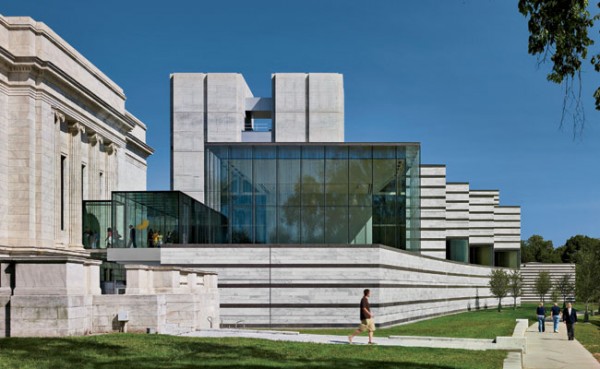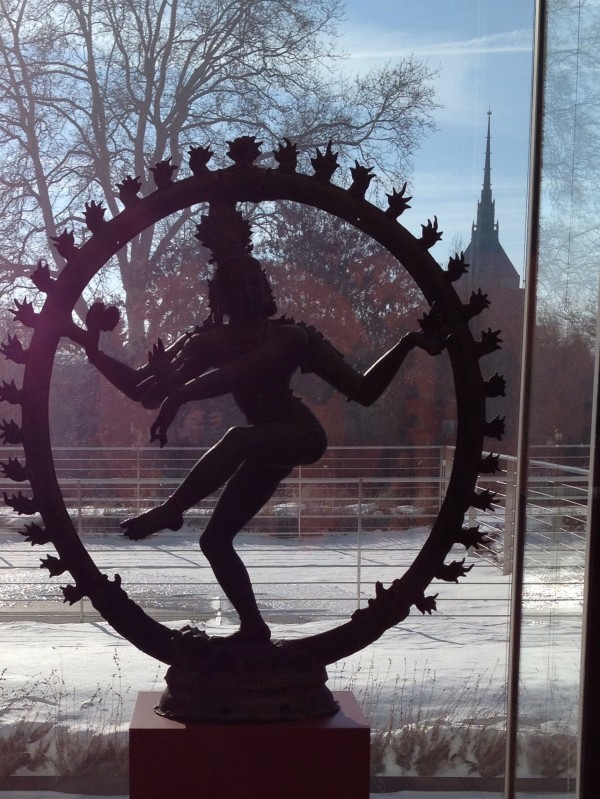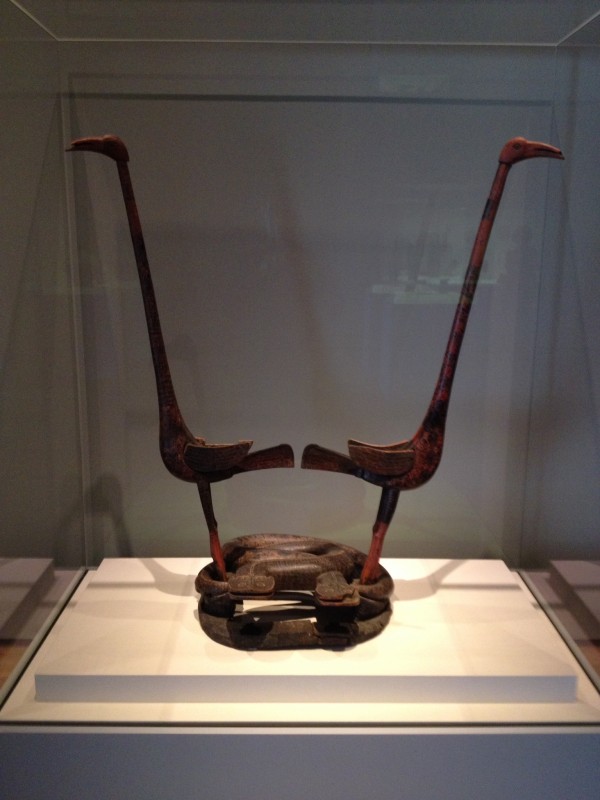
Go north, art visitor, go north – to the fully re-opened Cleveland Museum of Art
It’s been eight years in the making, but the fully renovated and expanded Cleveland Museum of Art celebrated its grand re-opening on this past New Year’s Eve, with doors wide open to the full community beginning January 2nd. (And it needs to be said from the onset that this museum, unlike most and certainly most of its size and scope, has free admission!)
Not only are the galleries laid out differently (so that dedicated space is available for ceramics, calligraphy, different colored stonework and sculpture, and the like), but the newly-designed areas incorporate in galleries at the end of the wing areas that are drenched in sunlight and bring the outdoors in. For example, among its Indian art collection there is a highly-intricate statue of Shiva as the Lord of the Dance. As communications manager Saeko Yamamoto explained it, the curator wanted the work to be viewed in much the same kind of setting or ambiance that it originally had. It’s quite striking indeed.
Shiva as Lord of the Dance, Cleveland Museum of Art.
With the bringing back of its Chinese, Indian and Himalayan art collections in the last-to-be-completed west wing of the museum, CMA is fully open for business. Not only are works that haven’t been seen for eight years on display again, but several new works purchased or received as gifts during the hiatus are on exhibit in the resplendent galleries.
Cranes and Serpents, Cleveland Museum of Art.
One special addition is the Benkhaim Collection of Deccan and Mughal Paintings, a group of works acquisitioned in 2013. The works represent, as CMA notes, an unparalled private collection of 95 works from India’s major Islamic courts from roughly the period from 1526 to 1858.
The Mughal Empire began in what is now Uzbekistan and spread southeast through Afghanistan, Kashmir, northern India, and on into Bangladesh. Interestingly, the emperors traced their lineage on the mother’s side from Genghis Khan and on the father’s side to Timur, the ruthless Turkic prince who was widely known in medieval Europe as Tamerlane. That might explain the fascination for things Persian and the fusion of central Asian, Indian and Middle Eastern art forms into what is clearly defined as Mughal art.
“Timur Distributed Gifts from His Grandson,” Cleveland Museum of Art.
Seemingly characteristic of the genre are illustrated stories, like the multi-part “Tales of the Parrot” (of which CMA has 334 of the original 341 individual pieces) and the collection of paintings of courtiers into an album for the emperor to have – kind of like a political family tree to show the extent and reach of the empire. The result are paintings of figures in various native dress and settings that become a kind of record of social, fashion and political history.
Most of the pieces on display seem to be opaque watercolors, with various inks and gilt mixed in to liven up the objects or scenes in the works themselves. The exhibit includes items that come from the far reaches of the empire.
The Chinese, Indian and Himalayan art collections are on view 10 a.m.-5 p.m. Tuesday, Thursday, Saturday-Sunday and 10 a.m.-9 p.m. Wednesday and Friday at the Cleveland Museum of Art, 11150 East Blvd., Akron; 800-262-0033; www.clevelandart.org. Admission is free.
Recent Content
-
Artsarticle ·
-
Artsarticle ·
-
Artsarticle ·



